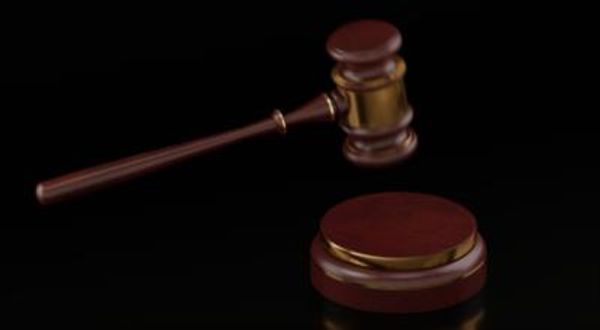
With a few hours until the Albanese government’s second budget, plenty is already known about what will be in it. Crikey is keeping an eye on what we know, gleaned from information “dropped” to newspapers and public comments from key ministers.
Surplus appears certain
Labor will deliver a $4 billion surplus in tonight’s budget, The Sydney Morning Herald and others report. The government won’t confirm it until after 7.30pm, but Treasurer Jim Chalmers has been hinting at it for days.
“Even with this quite substantial near-term improvement in the budget, the pressures on the budget in the third and fourth and subsequent years are actually intensifying rather than easing,” he said recently.
“There is — in the near term — a substantial improvement, but then a deterioration after that. And it is partly because of the prices that we’re getting for our exports, but also we are overperforming when it comes to the unemployment rate and when it comes to the beginnings of wages growth, which is very welcome, and that feeds into a better bottom line in the near term as well.”
Cost-of-living and energy bill relief
Treasurer Jim Chalmers hinted earlier that various forms of relief measures will be in the budget: “It will be a plan that has multiple elements. We’ve already pointed to childcare being cheaper, medicines being cheaper, giving people a bit of help with electricity bills. These are all important components of what you’ll see on Tuesday night.”
The “centrepiece” of the $14.6 billion cost-of-living package will be energy bill relief for 5.5 million households.
Labor promised during the election campaign that energy bills would be reduced by $275 each year for each home by 2025. So far that hasn’t happened, and Opposition Leader Peter Dutton has brought up the “broken promise” as often as he can.
When Prime Minister Anthony Albanese was asked about cost-of-living relief recently, he said the budget would include measures to force down power bills. He told radio host Richard King’s show: “Our energy price relief plan … is a $1.5 billion fund to provide support for people with energy bills by reducing them and that will have a significant impact. That’s just one of the measures that will be included in the budget.”
Gas tax
The petroleum resource rent tax will be tweaked so that the government will be able to collect $2.4 billion more over four years. The tax applies to oil and gas projects in offshore federal waters, and Chalmers has considered a Treasury review of the levy, currently worth about $2 billion a year. The budget will cap the proportion of PRRT assessable income that can be offset by deductions at 90%.
Ukraine aid to continue
Chalmers told reporters on Friday Australia remained a “big supporter” of Ukraine and that aid for the country — which is fighting off an invasion by Russia — would continue. “We are already one of the biggest non-NATO contributors to the effort in Ukraine … We are a big supporter of the Ukrainian efforts to repel the Russian invaders, and that will be represented in the budget,” Chalmers said.
Aged care pay boost
Aged care workers will get a 15% pay boost, underpinned by an $11.3 billion investment, in next week’s budget, Aged Care Minister Anika Wells has announced. It comes after a Fair Work Commission ruling and will begin on July 1.
Payday super
Employers will need to pay workers superannuation on payday, rather than quarterly, from July 1 2026. It’s estimated that could add thousands of dollars to super accounts over time, especially for young workers.
Payday super “will be in the budget”, Chalmers said this week. “It’s just common sense to pay superannuation with wages. It’s a simple change, it will strengthen the system, and it will also strengthen people’s retirement balances.”
JobSeeker boosts for over-55s
The government is expected to boost welfare payments for people aged over 55. The move has been sold as a way to help women and the long-term unemployed.
“You’ll see on budget night what we intend to do about this,” Chalmers said. “I have made it really quite clear that one of the troubling developments is that the growth particularly in women over 55 in our unemployment numbers … It is something that concerns us, particularly for women over 55 who find it harder to get back into the workforce, particularly for the long-term unemployed.”
Vape ban
The government has vowed to spend $234 million to fight vaping. The goal is to ban recreational vaping altogether; officials worry the habit is creating a generation of nicotine addicts.
Stage three tax cuts
The controversial tax cuts, which will mainly benefit high-income earners and are estimated to cost at least $254 billion, will go ahead. They won’t necessarily be itemised in the budget, as Chalmers told Patricia Karvelas on ABC Radio recently, but one thing seems to be sure: the price tag will end up even higher than a quarter of a trillion dollars.
Asked how much the cuts were likely to cost, Chalmers said: “I don’t have that number for you today, but the important thing to remember about that number is another year comes into it in the 10-year profile and in the forward estimates profile, so the number will be bigger.
“It will be factored into the underlying cash balance in the budget, but it isn’t identified in the budget because it’s an old decision that has already been legislated. The budget itemises the new decisions, and our position on that hasn’t changed.”
Will any of these leaked budget measures benefit you or people you know? Let us know by writing to letters@crikey.com.au. Please include your full name to be considered for publication. We reserve the right to edit for length and clarity.







